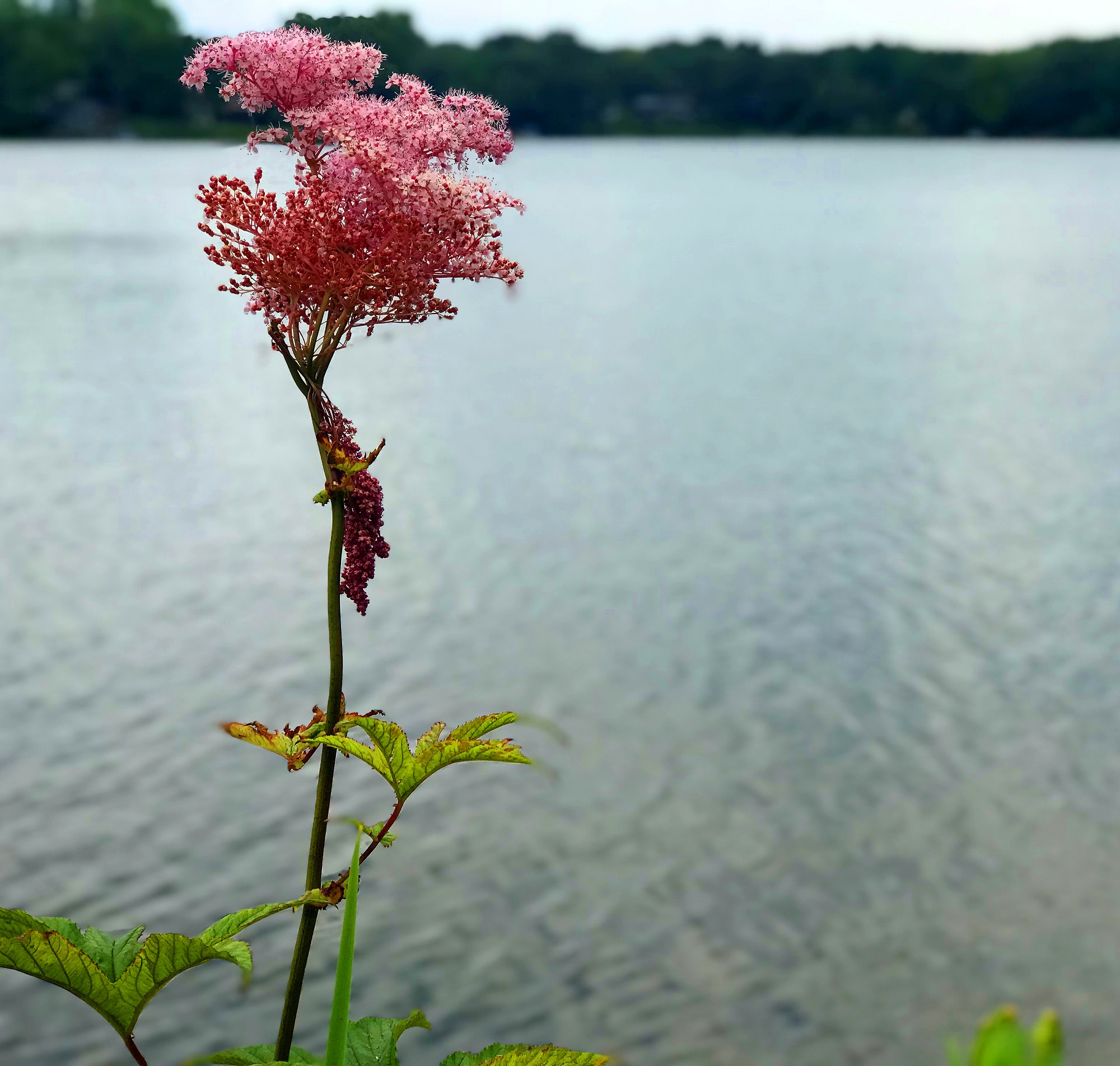Photo by Sheryl DeVore
In July, standing tall along the Loch Lomond South Beach shoreline, is the queen-of-the-prairie. Its soft pink cluster of flowers look like cotton candy on a long green stalk. And guess what? It’s a threatened species in Illinois. It’s difficult to find in its natural habitat—wet prairies.
But folks who know how to create little snatches of wet prairies in their gardens can grow it. While at the beach recently, I was thrilled to see several of these cotton-candy prairie delights shining along the shore, scattered among other native plants that like it wet. These were planted here by volunteers, and I’m always grateful to them when I see the queen-of-the-prairie blooming in July.
When you visit either of the beaches you’ll notice mini-gardens that demonstrate native species that can grow in wet spots. There are two great reasons for growing these plants. First, they add beauty to the landscape, and second, they absorb pollutants that would otherwise filter into the lake.
I tried growing queen-of-the-prairie in my yard once, but I’m quite certain I put it in the wrong place. It was dry and not too sunny and overcrowded by more aggressive plants.
It does best in moist, well-drained soil in full sun, but it also can take part shade. Native prairie plant growers recommend purchasing this species at a garden center rather than trying to grow it from seed, which can be difficult. Go online to visit some native prairie nurseries, and you might be able to purchase it for planting in the fall.
Out in the wild, this species grows in moist black soil prairies, fens, seeps, and springs. This plant is threatened because of loss of habitat and because it must rely on insects to pollinate it. The plant cannot pollinate itself, but bees, beetles, and flies will do the job nicely. Interestingly, it doesn’t create nectar, so when a butterfly lands upon it, it will fly away hungry.
One great thing about this native species that produces fluffy pink blossoms is that deer don’t seem to like it much.
The root of this plant has been used by Native Americans and early settlers as a treatment for skin rashes and other ailments. Legend says it also was used as an aphrodisiac.
Next time you’re at the South Beach, look for the queen-of-the-prairie. Its blossoms won’t last for long. By August, the pink will have faded to brown.


Thanks so much for sharing your expertise with us!